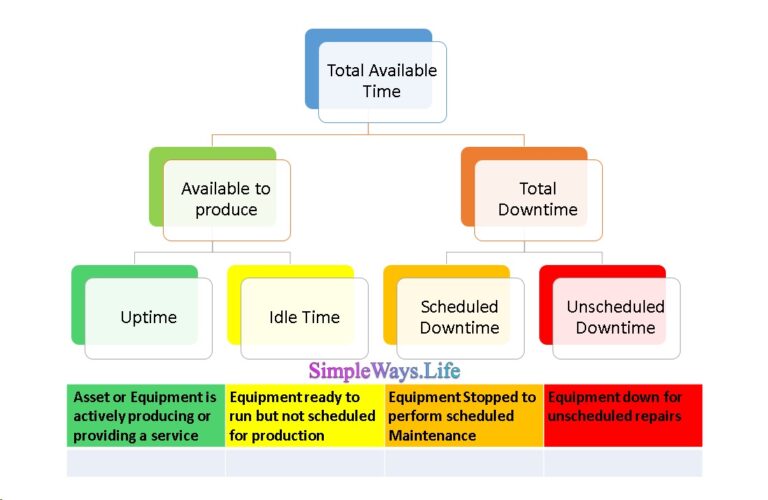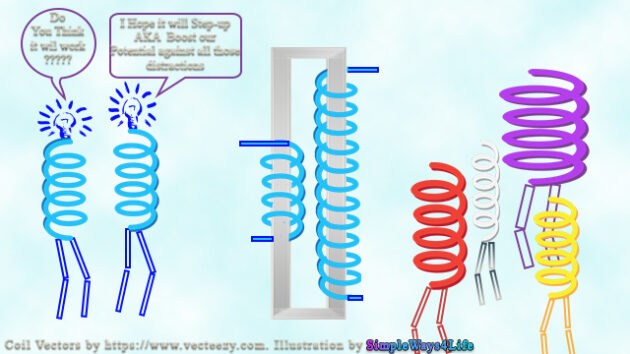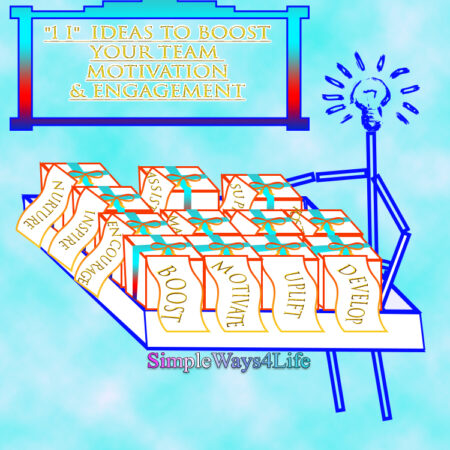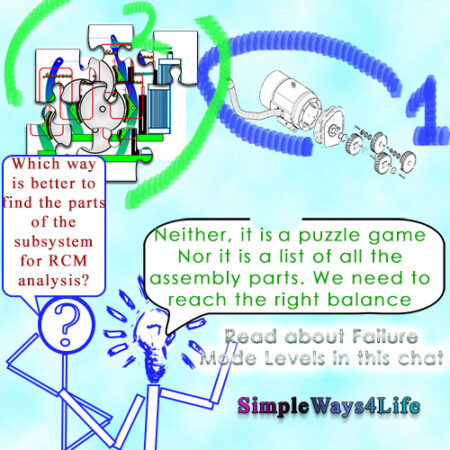I was always thinking is there a simple approach to an automated maintenance program. And is it possible to integrate the understanding of the maintenance concepts within the automated system? Not just pushing the team to follow some steps they don’t comprehend so someone gets a result they don’t understand.
Curiosity Never killed the Cat!!
I was curious about the conflict the word “System” produces. It is no ones mistake, but the “System” was always having the perception of something running through computers and servers. This perception implied a conception that it needs certain computer literacy to use it not to mention supervising or troubleshooting it.
That’s why when I was preparing the training courses that will be soon available, I had selected the word “Program”. As it implies the meaning of a holistic approach rather than a machine approach. Then you are given the tools to automate your understanding after building it with your own hands. Later you can migrate to any more sophisticated “System” that might serve you more based on the size and the needs of the organization. But this time when you go there you had the knowledge of how things are running in the background. Moreover, you had a vision what each piece of data do and how they will assemble you a Maintenance Program that serves you not parents you.
I was curious more about the complexity of administrating a Maintenance System. Many times those who look after the healthiness of the system are not from a maintenance background. Other times, they are from a maintenance background and upgraded their technical skills to include the “System” administration. The target was usually to make it easy for the users to use the system to its full capacity.
This curiosity let me think about what is missing from the equation. Why many of us finds the Computerized Maintenance Management Systems exhausting from the point of view of the data needed to feed the system.
Another curious question was about the wrong complexity and expensiveness perception of applying a “System” for maintenance that hinders many small organizations from adopting one.
Is it a System or a Program?
There is a definition of the maintenance program that we had derived through the analogy between many typical definitions of the word “Program” and the best practices of the maintenance process. This definition simply says:
A maintenance program is a set of regular maintenance activities planned and documented with steps which aim to maintain production levels and quality and the assets status at a defined level
Maintenance startup training course
While System is:
a set of things working together as parts of a mechanism or an interconnecting network; a complex whole.
To trigger a system, you simply need a process to automatically initiate requests for the maintenance activity in the program. It seems difficult when you need to enter a lot of data in the system to activate the auto cycle. However if you are able to customize those needs to allow you to make an easy quick start you will be willing to give it a try. Then you have the option to build upon it yourself.
What stops all this is the missing understanding of the basic blocks of the maintenance program. So it is considered as extra meaning-less effort and just compliance to the system asks for it. If you didn’t get enough understanding of those concepts, you won’t be understood by your team. Then you have hard time advocating the necessity of complying to the system. Then the system would turn to be a black hole that takes a lot of the team effort. Moreover they know how to feed it with data but not to withdraw gain from it. You can read more about that here: Stop looking for a Maintenance System to parent you.
The missing milestone
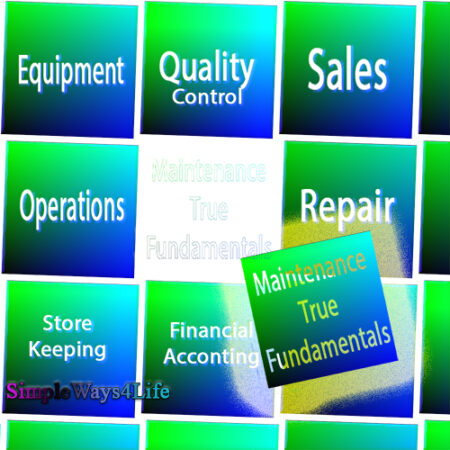
Simply the missing milestone in most of the maintenance approaches is the holistic understanding of the maintenance management process. Many of us seeks actions and keeping the team engaged in the doing phase. The eagerness to keep your team busy doing rather than smartly doing reduces the focus on why we are doing those actions. We need to understand:
- The real target behind maintenance,
- What added value maintenance offers the organization and,
- The fundamental building blocks of the maintenance program
After we understand the maintenance management trilogy above we can successfully manage the transition from the reactive mentality to the proactive approach. This understanding is the main target of our Maintenance startup training course.
What about small organizations? Can they have a maintenance program?
Small organizations often let their maintenance team focus on troubleshooting to keep the equipment running. They play the role of fire fighters. The situations turns to be disastrously when failures spread as forest fires and the team is not sufficient or qualified to put it off. When the organization returns to the manufacturer for technical support, he asks for the records. Usually, there are none. And the maintenance team who were looked up to as heroes saving the production equipment are now labeled incompetent.
All this because it was thought in the beginning that applying a maintenance program is hard, costly and time consuming. This wrong perception stemmed from the absence of Maintenance Management procedures and step-by-step easy approach to apply it.
I was confident that there is a way to make it available for every organization regardless of its size to properly manage its equipment maintenance. I found it possible only through the proper understanding of the fundamental building blocks of Maintenance Program. This way it is possible to rip the benefits healthy stable equipment. Those benefits directly uplifts the availability, productivity, safety and profitability of the production equipment.
Who is supervising the maintenance team?
Regardless of who is responsible for the maintenance process in the small organizations, they need to be aware of the fundamentals of the maintenance program. This awareness includes Why they do maintenance? Why maintenance is important to the organization? How to implement a structured version of true maintenance program? Moreover how to convert it into a system easily. Medium and big organizations usually have dedicated teams for maintenance. Some times the maintenance team supervision is shouldered to supervisors from outside the maintenance field . When this happens, it might be a nightmare for the execution team and supervision. They don’t speak the same language so they don’t understand each other fully. This returns us to Steven Covey Habit 5 of the 7 Habits of highly effective people:
Seek First to Understand, Then to Be Understood®
Steven Covey
In Conclusion,
There is no doubt about how beneficial is the proactive maintenance for the organization cost, productivity, profitability, safety and many other aspects. To rip those benefits, you need to understand the fundamental building blocks of the maintenance program, explore it with your hands then, apply it. That’s why in our coming courses we focus on those basic skills that are needful for anyone related to the maintenance field either closely by working there or even selling maintenance systems. Even those having maintenance activities in their organization but they are not directly linked to it, they need to see the right face of the maintenance. Enjoy your coffee however you like it, it is a bless.
If you feel you need help with any of these ideas we discussed, request a Management Consultancy or Coaching Services From our Store


